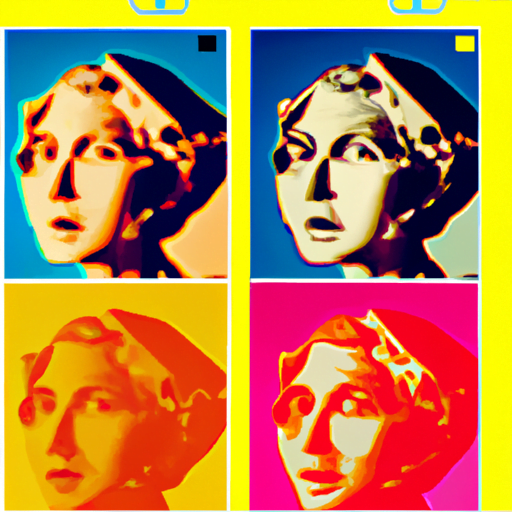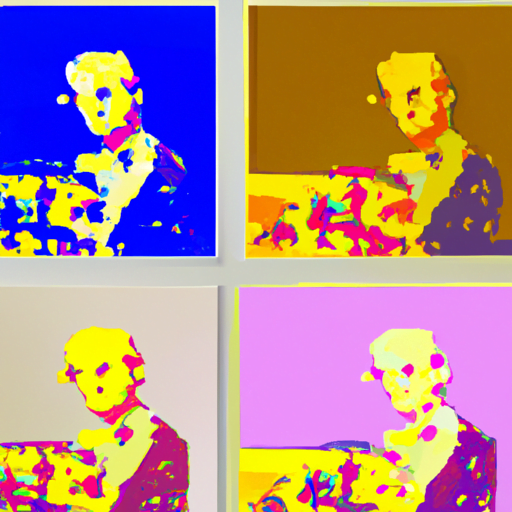
-
Table of Contents
- The Challenge of Bias in AI-Generated Designs
- Understanding Bias in AI
- The Implications of Bias in AI-Generated Designs
- 1. Reinforcing Stereotypes
- 2. Exclusion of Marginalized Communities
- 3. Amplifying Inequalities
- Addressing Bias in AI-Generated Designs
- 1. Diverse and Representative Datasets
- 2. Ethical Design Principles
- 3. Regular Testing and Evaluation
- Case Studies: Bias in AI-Generated Designs
- 1. Google’s Image Recognition Algorithm
- 2. Amazon’s Gender-Biased Hiring Algorithm
- Conclusion
The Challenge of Bias in AI-Generated Designs

Artificial Intelligence (AI) has become an integral part of our lives, influencing various aspects of society, including design. AI-generated designs have the potential to revolutionize industries such as graphic design, architecture, and fashion. However, there is a growing concern about the presence of bias in these AI-generated designs. Bias in AI can perpetuate stereotypes, reinforce inequalities, and exclude marginalized communities. This article explores the challenge of bias in AI-generated designs, its implications, and potential solutions.
Understanding Bias in AI
Bias in AI refers to the systematic and unfair favoritism or discrimination towards certain groups or individuals. AI algorithms are trained on large datasets, which can inadvertently contain biased information. This bias can be introduced through the data collection process, the biases of the human designers, or the inherent biases in society. When these biased datasets are used to train AI models, the resulting designs can reflect and amplify these biases.
One example of bias in AI-generated designs is the case of facial recognition technology. Studies have shown that facial recognition algorithms are often less accurate in identifying individuals with darker skin tones or women compared to lighter-skinned individuals or men. This bias can have serious consequences, leading to misidentification and potential harm to individuals from marginalized communities.
The Implications of Bias in AI-Generated Designs
The presence of bias in AI-generated designs can have far-reaching implications. Here are some key areas where bias can impact:
1. Reinforcing Stereotypes
AI-generated designs that perpetuate stereotypes can reinforce societal biases and hinder progress towards equality. For example, if an AI algorithm consistently generates designs that depict women in traditional gender roles, it can reinforce the stereotype that women are primarily suited for domestic work rather than leadership positions.
2. Exclusion of Marginalized Communities
AI-generated designs that are biased towards certain groups can exclude and marginalize others. For instance, if an AI algorithm is trained on datasets that primarily represent the preferences of a specific demographic, it may fail to cater to the needs and preferences of other communities. This exclusion can lead to a lack of representation and diversity in design.
3. Amplifying Inequalities
Bias in AI-generated designs can amplify existing inequalities in society. For example, if an AI algorithm is biased towards certain body types in fashion design, it can perpetuate unrealistic beauty standards and contribute to body image issues. This can have a detrimental impact on individuals’ self-esteem and mental health.
Addressing Bias in AI-Generated Designs
Addressing bias in AI-generated designs is a complex challenge that requires a multi-faceted approach. Here are some potential solutions:
1. Diverse and Representative Datasets
Ensuring that AI algorithms are trained on diverse and representative datasets is crucial to mitigate bias. This involves collecting data from a wide range of sources and demographics, including underrepresented communities. Additionally, it is important to regularly update and retrain AI models to account for evolving societal norms and values.
2. Ethical Design Principles
Designers and developers should adopt ethical design principles that prioritize fairness, transparency, and accountability. This includes conducting thorough audits of AI systems to identify and mitigate biases. Designers should also involve diverse stakeholders in the design process to ensure a variety of perspectives are considered.
3. Regular Testing and Evaluation
Regular testing and evaluation of AI-generated designs are essential to identify and address biases. This involves conducting comprehensive audits, soliciting feedback from users, and monitoring the impact of designs on different communities. Continuous improvement and iteration are key to creating more inclusive and unbiased AI-generated designs.
Case Studies: Bias in AI-Generated Designs
Several case studies highlight the presence of bias in AI-generated designs:
1. Google’s Image Recognition Algorithm
In 2015, Google’s image recognition algorithm labeled images of black people as “gorillas.” This incident exposed the racial bias present in AI algorithms and the need for more diverse training data to avoid such harmful misclassifications.
2. Amazon’s Gender-Biased Hiring Algorithm
In 2018, it was revealed that Amazon’s AI-powered hiring algorithm was biased against women. The algorithm penalized resumes that included terms associated with women, leading to a gender imbalance in the hiring process. This case highlighted the importance of scrutinizing AI systems for biases and ensuring fairness in decision-making processes.
Conclusion
The challenge of bias in AI-generated designs is a pressing issue that requires immediate attention. Bias in AI can perpetuate stereotypes, exclude marginalized communities, and amplify inequalities. To address this challenge, diverse and representative datasets, ethical design principles, and regular testing and evaluation are crucial. By taking proactive measures to mitigate bias, we can create AI-generated designs that are more inclusive, equitable, and reflective of the diverse world we live in.
